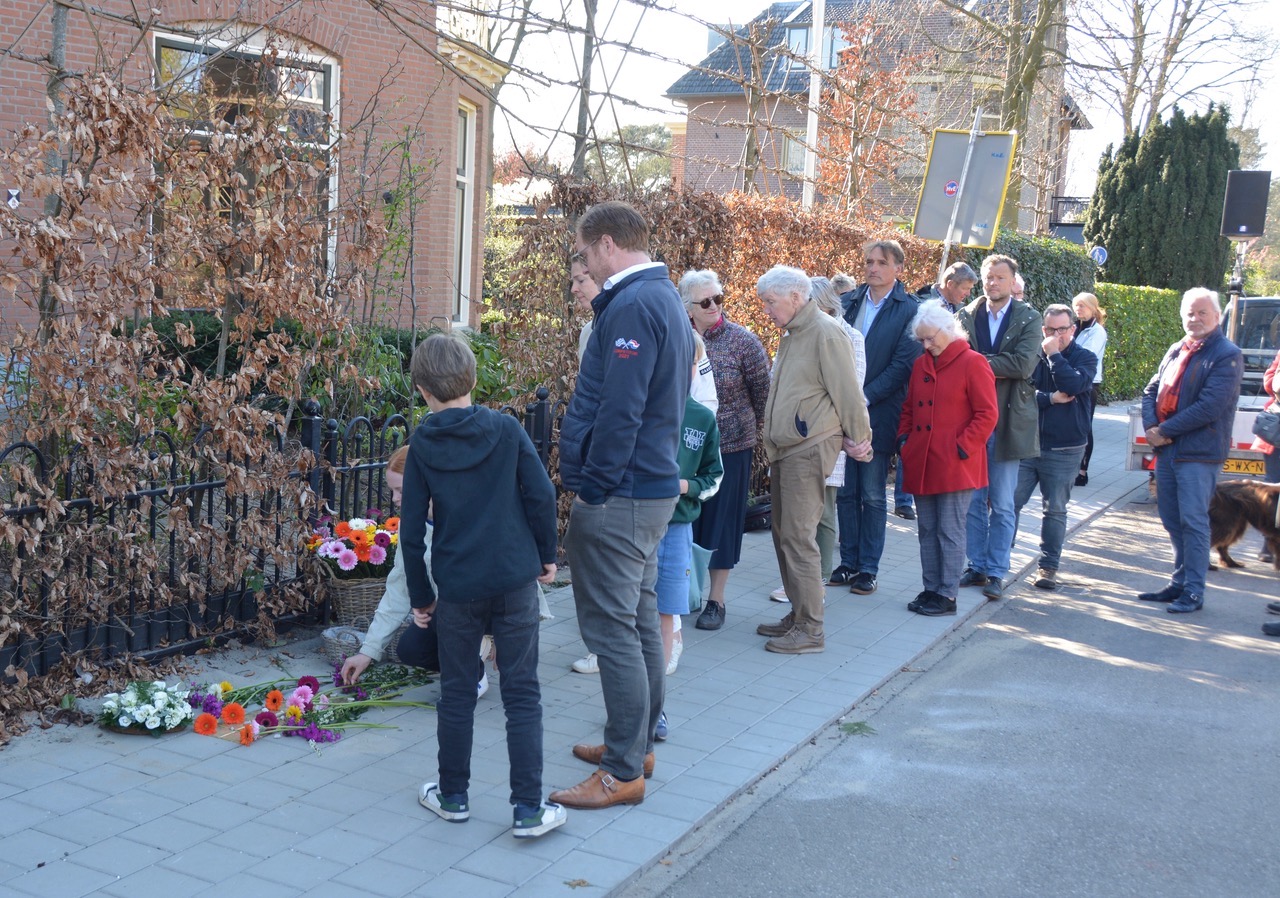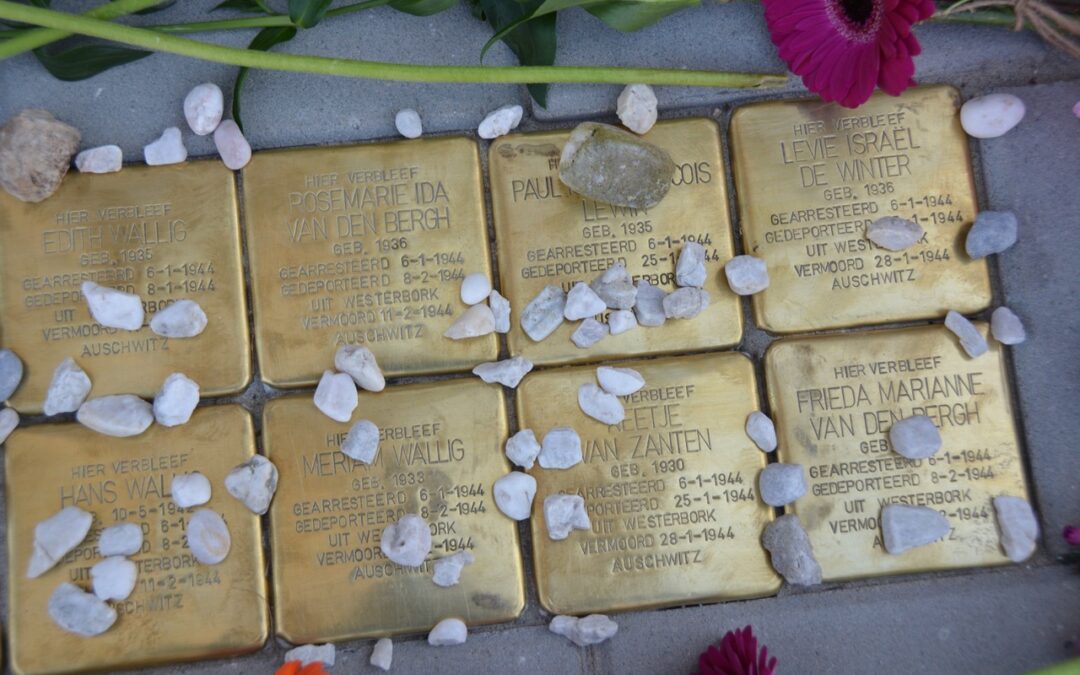Memorial Stones
World War II ended 60 years ago. These children were murdered in 1944. They hadn’t done anything deserving of this fate–they were innocent children who happened to be Jewish. Some of them have family members who remember them. For others, everyone who was related to them also perished. Who can remember them?
This bothered German artist Gunter Demnig, who began placing stumbling stones or Stolpersteine, brass plates that are inscribed with the name and dates of those who the Nazis murdered. The stones are placed on the sidewalk outside the victim’s last place of residence. Some have argued that placing memorial stones on the sidewalk is disrespectful. The faces of these people and the flowers being laid don’t look irreverent to me!
Remembering
In my case, Nazis took my father’s cousins, Meriam, Edith, and Hansje Wallig, from de Viersprong in Driebergen on January 6, 1944. They also took many other Jewish children. One of them was my dad’s special friend, Keetje van Zanten. She escaped from the room and begged Dad to hide her. He couldn’t, and he never forgot.
As part of my research for Unforgivable, the story of Dad’s life, I found the Jewish memorial in the nearby park, but it wasn’t easy. I am very glad about the memorial stones placed right outside the home where the children spent their last days. The place where Hanje took his first steps. This is the place where Meriam discussed her fears with Dad. It is the place where Keetje played the piano. We won’t forget you all.



Thank you Caroline for posting this news. Because of the stones the children will be remembered, especially by the younger generations who never experienced war in their own country during their lifetimes.
I experienced war very differently from you, Meta. In small town Iowa we collected cans, flattened them and saved tinfoil. we also collected milkweed pods, supposedly the fluff could be used in life savers. But we had enough to eat – though some was rationed. My dad was a Chaplain in the Navy (Seabees) for almost 3 years. But Not Nearly The Same as Your Life!
THANK YOU FOR SHARING YOUR STORIES. Your books are moving. It is a good thing
to be in communication with your readers. May you be. inspired to write on….
The war has now been over for 80 years already and I still remember those sad and scary years as a child.
It is good to remember as with the Memorial stones in this article and try to keep Peace in this World we live in each day …
God willing we will not repeat the horrors of the past in the country we lived in … we must do all we can to reason together and seek a peaceful coexistence….